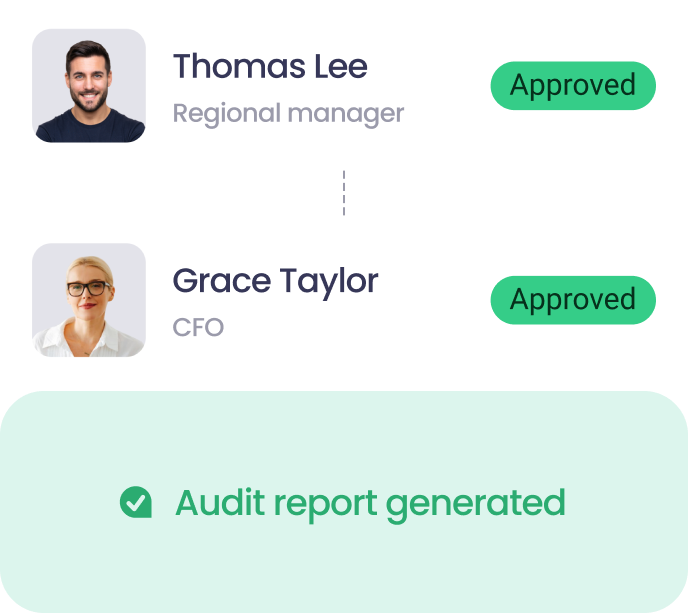
Accounts payable KPIs: What to measure and why it matters

Struggling with manual processes, late payments, and chasing invoices? For many finance teams, accounts payable is where bottlenecks build up – fast. Tracking the right KPIs helps fix.
Accounts payable KPIs are metrics used to measure how efficient, accurate and cost-effective your AP processes are. This article is for accountants, bookkeepers, AP managers and CFOs who want better insight and control over AP. We’ll walk through:
- Which KPIs to track
- How to improve performance
- How automation helps you reach your goals faster
What are KPIs in accounts payable?
KPIs (key performance indicators) are measurable values to track how your AP processes are performing.
In accounts payable, KPIs help you answer important questions like
- How long does it take to process an invoice?
- How accurate are your payments?
- Are you missing early payment discounts?
Leading and lagging are the two types of accounts payable KPIs.
What’s the difference between leading and lagging KPIs?
Leading KPIs help predict future performance. For example:
- Cycle time
- Invoice exception rate
Lagging KPIs show past outcomes. For example:
- Days payable outstanding (DPO)
- Late payment rate
You can also group KPIs into the following categories:
- Efficiency KPIs (e.g. invoices processed per employee)
- Accuracy KPIs (e.g. payment error rate)
- Timeliness KPIs (e.g. on-time payment rate)
- Cost KPIs (e.g. cost per invoice)
Why does tracking accounts payable KPIs matter?
Companies that don’t measure performance data are simply guessing, which can end up costing you in the long-term.
Tracking KPIs helps to:
This isn’t just for large businesses. Smaller teams can benefit too, saving hours every week and freeing up working capital.
But how do you get started? Think of your biggest pain points and choose three KPIs below that relate.
Top 10 accounts payable KPIs with formulas & benchmarks
Here are 10 essential KPIs to track, including what they measure and how to calculate them:
Days payable outstanding (DPO)
- What it measures: Average number of days to pay suppliers
- Why it matters: A higher DPO can improve cash flow, but waiting too long can hurt supplier relationships
- Formula: (Accounts payable / Cost of goods sold) x Number of days
Cost per invoice
- What it measures: Total cost to process a single invoice
- Why it matters: High costs often point to manual processes and inefficiencies
- Formula: Total AP cost / Number of invoices processed
Early discount capture rate
- What it measures: How often early payment discounts are used
- Why it matters: Missed discounts = missed savings
- Formula: Discounts captured / Discounts offered × 100
Payment error rate
- What it measures: Percentage of payments with errors
- Why it matters: Errors increase risk and waste time
- Formula: Number of payment errors / Total payments × 100
Late payment rate
- What it measures: Percentage of payments made after due date
- Why it matters: Late payments can lead to penalties and damage trust
- Formula: Late payments / Total payments × 100
Average time to approval
- What it measures: How long it takes to approve an invoice
- Why it matters: Long delays often mean unclear workflows or bottlenecks
- Formula: Total time from invoice receipt to final approval / number of invoices
Invoices processed per employee
- What it measures: Invoices handled by each AP team member
- Why it matters: Helps track productivity and staffing needs
- Formula: Total invoices processed / Number of AP employees
Time to process a single invoice
- What it measures: Time from receiving invoice to payment
- Why it matters: Long cycle times slow down the payables process
- Formula: Time of payment - Time of receipt
Invoice cycle time
- What it measures: Average time through the full AP process
- Why it matters: Key efficiency metric that highlights delays
- Formula: Total invoice processing time / Number of invoices
ROI on AP automation
- What it measures: Return on automating AP tasks
- Why it matters: Shows the financial value of automation tools
- Formula: (Benefits - Cost of automation) / Cost of automation × 100
How to improve KPI performance
In this section, we’ll look at practical ways to boost your KPIs, both across the board and for individual roles.
General tactics to improve AP KPIs
-
Standardise invoice formats
Use consistent templates and data fields for all incoming invoices. This reduces errors, speeds up processing and limits the need for manual corrections. -
Set clear approval thresholds
Define who needs to approve invoices based on value or type. This prevents unnecessary delays and helps invoices move through the system faster. -
Create a monthly KPI review habit
Block time each month to review key metrics with your team. Use this time to flag bottlenecks, discuss trends, and adjust processes as needed. -
Clean and consolidate vendor data
Keep your vendor database accurate and up to date. This helps avoid duplicate payments, mismatches, and delays during approval. -
Train staff on recurring AP issues
Identify common process errors like missing purchase orders or incomplete entries, then run short training sessions to prevent repeat mistakes.
Role-Based KPI improvement strategies
Every role in a finance team can impact accounts payable KPIs. Here’s a breakdown of how different team members contribute:
CFOs
Focus KPIs: DPO, automation ROI, discount capture
- Set company-wide goals that align with business priorities
- Use dashboards to monitor trends and progress
- Invest in automation and standard processes
AP Managers
Focus KPIs: Invoice cycle time, exception rate, cost per invoice
- Monitor workflow delays and adjust approval routing
- Use reports to identify training or resource gaps
- Benchmark monthly and adapt team workloads
Bookkeepers/Accountants
Focus KPIs: Late payment rate, error rate, on-time payment rate
- Double-check invoice coding and data entry
- Track due dates to stay ahead of deadlines
- Work with vendors to solve data mismatches
Aligning KPIs to roles helps teams to take action rather than just reporting on results.
How can AP automation improve your accounts payable KPIs?
If you're tracking KPIs but still handling approvals manually, there's a faster and more efficient way forward. Automating the process helps you create real, measurable results. Here’s how:
With the right tools in place, automation helps you not only meet your KPI goals, but consistently exceed them.
How can ApprovalMax help
FAQs
What are accounts payable metrics used for?
They help finance teams measure how well their AP process is running, from how fast invoices are processed to how often errors happen. Tracking these metrics helps improve accuracy, speed, and cost-efficiency.
How often should I track my KPIs?
A monthly review is a great starting point. If your business processes a high volume of invoices, then weekly check-ins can help you stay on top of changes and spot issues early.
What is the best KPI for accounts payable?
The best KPI depends on your priorities. If cash flow is key, track DPO. If efficiency is a concern, focus on cost per invoice or cycle time. Choose 3 pain points and take a look at our top 10 AP KPIs table above.
Ready to Simplify Your Approval Process?
Justin Campbell, an experienced accountant with a decade at Xero, blends his deep understanding of finance and technology to simplify processes. He uses his expertise to help businesses work smarter, bringing precision and innovation to every initiative.
Set up a system of checks and balances for your financial operations.
Multi-step, multi-role approval workflows for financial documents.

Auto-generated audit reports for each approved item.

Get alerts for fraudulent activity and protect against it happening.
Leave printing in the past with fully digitised workflows.



